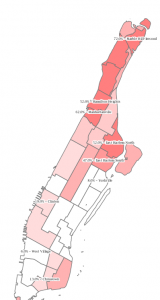After the spring in Spain in 1995, I attended classes in Portuguese. I felt that Portuguese shouldn’t be too hard to learn, because it’s closely related to Spanish. I was wrong. Portuguese is much harder than Spanish – and in this I mean the pronunciation. As people say that written and spoken French are different languages, this could also apply to Portuguese.
I learnt the Portuguese as spoken In Portugal and I would say it’s harder to learn than French.
The verbs in Portuguese, however, are pretty close to the Spanish ones. The infinitives are pretty much identical with the corresponding verbs in Spanish. There are some differences, though:
- Second person plural is not used (in Portugal)
- Compound tenses are not used
- “Synthetic pluperfect”, i.e., pluperfect is formed without auxiliary (like in Spanish and English)
- Conjugated infinitive
Somehow I felt that Portuguese preserves more verbal forms than any other Romance language – Romance languages are those that derived from Latin. The conjugated or inflected infinitive is something specific for Portuguese only.
I attended elementary Portuguese classes in one year only. But after that, guess what? I bought myself the first Portuguese verb conjugation book to master the Portuguese verbs.
Links:


